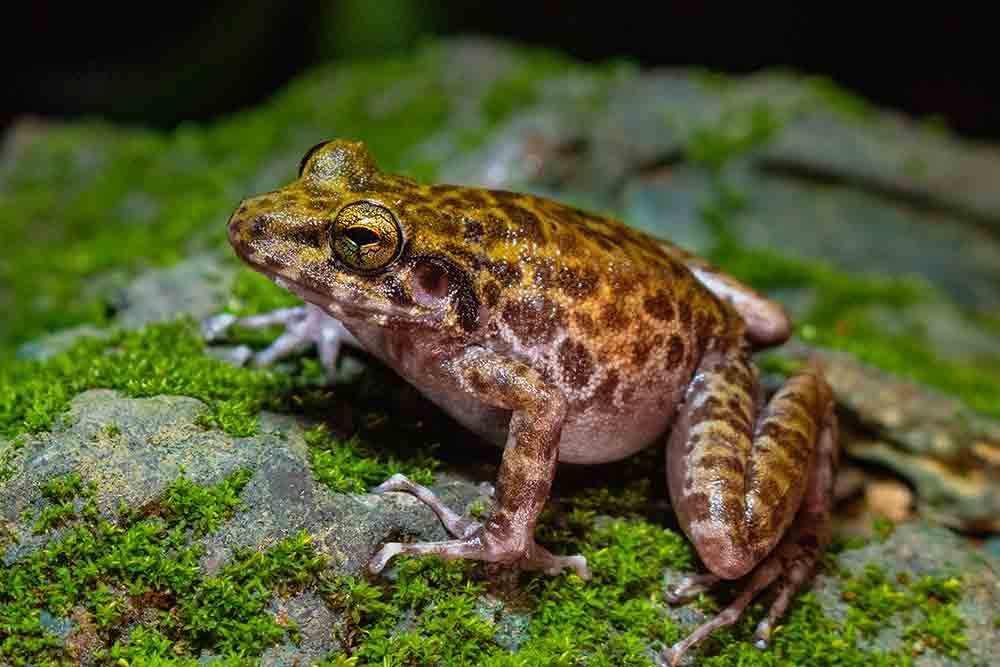It will help with monitoring wild populations of the frog as well as establish a captive breeding program at the University of the Philippines.
The National Geographic Society has awarded grant to Project Palaka, a conservation organization that is working to help the critically endangered Gigantes Island frog’s (Platymantis insulatus), wild populations. The frog, endemic to the Philippines’ Gigantes Islands ( a small collection of islands off Iloilo island in the southern Philippines),is the only Philippine amphibian listed as critically endangered by the IUCN.
The frog faces threats from climate change, deforestation, and damage to their cave ecosystems due to guano mining, tourism, and graffiti and vandalism.
New Fanged Frog Species Discovered In The Philippines
Researchers Discover New Species of Cloud Forest Frog In The Philippines
Project Palaka’s director, American Norman Greenhawk, launched the project in 2015. Greenhawk launched the project as part of his Fullbright student project. Greenhawk is working with the University of the Philippines, Los Baños Museum of Natural History on in-siute and ex-site conservation efforts to protect the frog’s populations.
The grant will help to fund “Project Palaka Phase II: Recovery of the Gigantes Island Frog.” It will help with monitoring wild populations of the frog as well as establish a captive breeding program at the University of the Philippines, Los Baños Museum of Natural History. The captive bred offspring will be released into the wild to help boost wild populations of the amphibian.
The Gigantes Island frog goes by several names, including the Gigantes wrinkled ground frog, island forest frog, South Gigante Island frog, Gigantes forest frog, and Gigantes limestone frog. The live in limestone karst forests and caves and are founding the moist and cool sections of caves.



